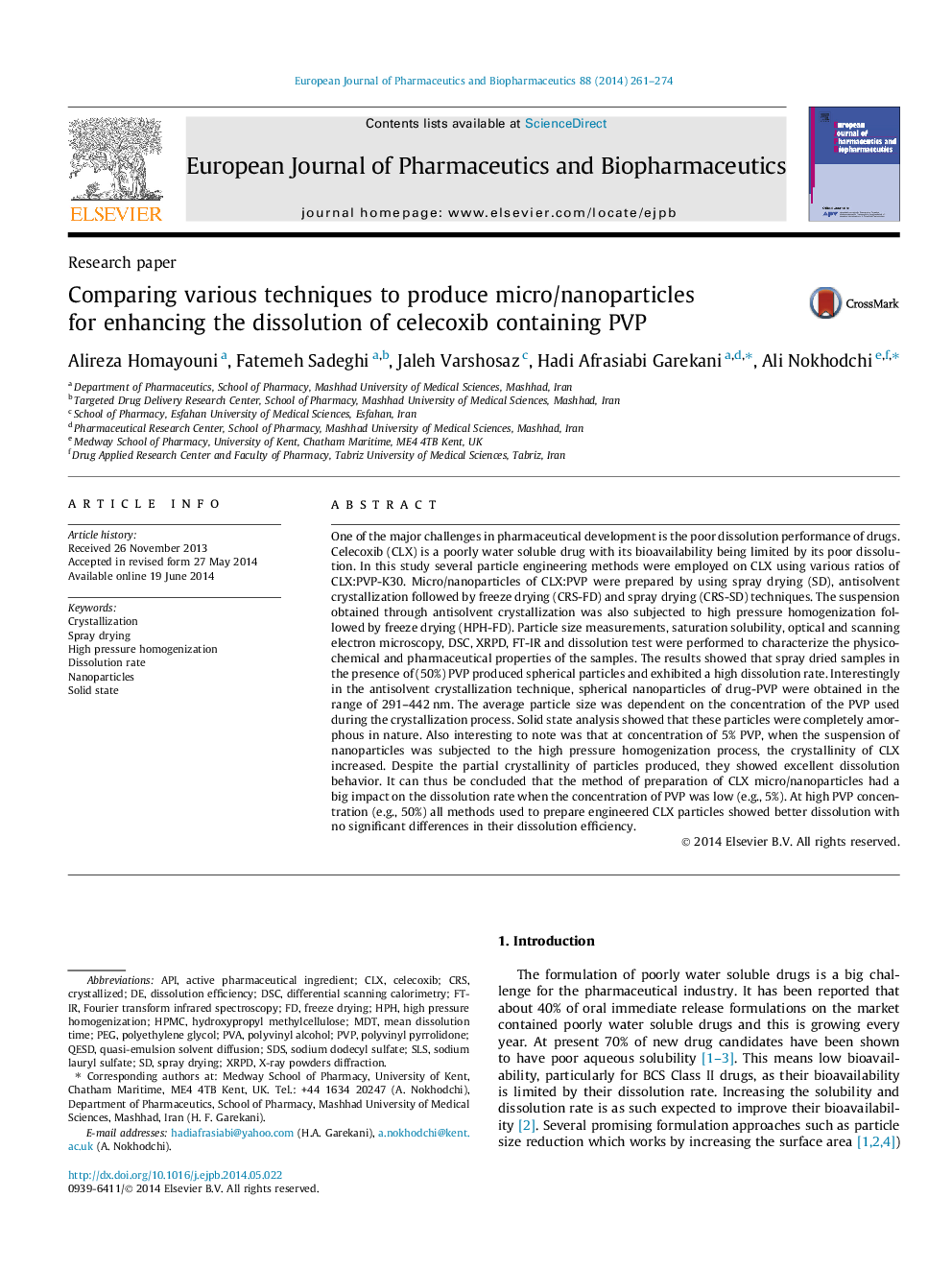| کد مقاله | کد نشریه | سال انتشار | مقاله انگلیسی | نسخه تمام متن |
|---|---|---|---|---|
| 2083606 | 1545339 | 2014 | 14 صفحه PDF | دانلود رایگان |

• Concentration of PVP had a big impact on the dissolution of celecoxib particles.
• CLX nanoparticles showed improved dissolution in the presence of PVP.
• Antisolvent crystallization technique generated spherical CLX:PVP nanoparticles.
• High pressure homogenization changed the morphology of spherical nanoparticles.
• The crystallization technique had an impact on dissolution performance of celecoxib micro/nanoparticles.
One of the major challenges in pharmaceutical development is the poor dissolution performance of drugs. Celecoxib (CLX) is a poorly water soluble drug with its bioavailability being limited by its poor dissolution. In this study several particle engineering methods were employed on CLX using various ratios of CLX:PVP-K30. Micro/nanoparticles of CLX:PVP were prepared by using spray drying (SD), antisolvent crystallization followed by freeze drying (CRS-FD) and spray drying (CRS-SD) techniques. The suspension obtained through antisolvent crystallization was also subjected to high pressure homogenization followed by freeze drying (HPH-FD). Particle size measurements, saturation solubility, optical and scanning electron microscopy, DSC, XRPD, FT-IR and dissolution test were performed to characterize the physicochemical and pharmaceutical properties of the samples. The results showed that spray dried samples in the presence of (50%) PVP produced spherical particles and exhibited a high dissolution rate. Interestingly in the antisolvent crystallization technique, spherical nanoparticles of drug-PVP were obtained in the range of 291–442 nm. The average particle size was dependent on the concentration of the PVP used during the crystallization process. Solid state analysis showed that these particles were completely amorphous in nature. Also interesting to note was that at concentration of 5% PVP, when the suspension of nanoparticles was subjected to the high pressure homogenization process, the crystallinity of CLX increased. Despite the partial crystallinity of particles produced, they showed excellent dissolution behavior. It can thus be concluded that the method of preparation of CLX micro/nanoparticles had a big impact on the dissolution rate when the concentration of PVP was low (e.g., 5%). At high PVP concentration (e.g., 50%) all methods used to prepare engineered CLX particles showed better dissolution with no significant differences in their dissolution efficiency.
Figure optionsDownload high-quality image (90 K)Download as PowerPoint slide
Journal: European Journal of Pharmaceutics and Biopharmaceutics - Volume 88, Issue 1, September 2014, Pages 261–274